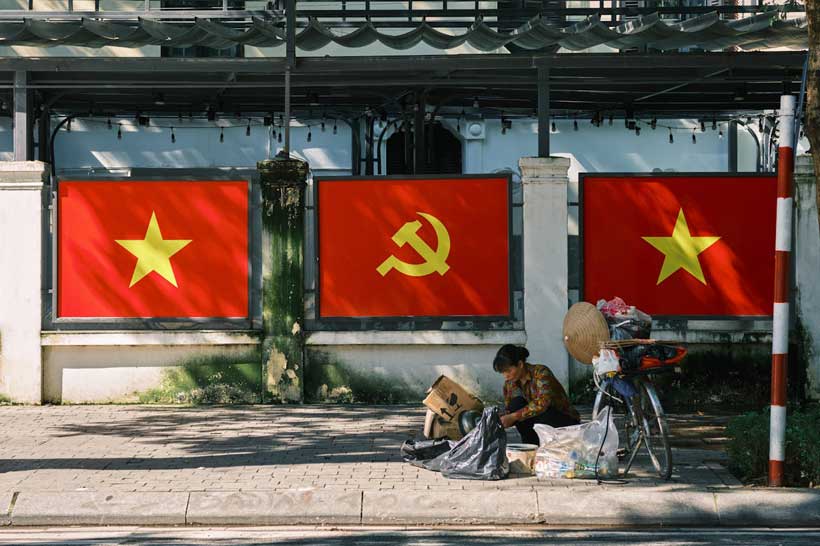In the context of the US-China competition and the post-COVID-19 global economic recession reshaping the international order, Vietnam has emerged as a stable and dynamic bright spot in Southeast Asia. The concept of “the era of the Vietnamese nation’s rise,” first mentioned by General Secretary of the Communist Party of Vietnam To Lam at the 10th Central Conference of the 13th tenure, reflects the aspiration to enter a new stage of development from “renovation” to “rise.” In fact, over the past year, Vietnam has achieved a growth rate of about 5.5-6%, higher than the average of many other countries in the region. Record FDI inflows, led by technology projects of technology companies Samsung, Apple, and Intel, as the expanding “China+1” trend helps Vietnam become an important link in the global supply chain. Inflation is maintained at 3-4%, and exports and domestic consumption recover strongly, while digital transformation, green development, and the semiconductor industry are considered new growth pillars.
One of the important milestones of the year is the program of reorganizing and merging administrative units, helping to streamline the apparatus and improve the efficiency of state administration. The reduction of nearly 30% of commune-level units and more than 10% of district-level units not only saves budget costs but is also considered a step forward in institutional quality towards a professional administration.
In foreign affairs, Vietnam has shown an increasingly confident role as a middle power expanding its strategic space. The upgrade of relations with the United States to a Comprehensive Strategic Partnership puts Hanoi among the few countries that maintain special relations with both Washington and Beijing. Relations with Japan, South Korea, India, and Australia continue to be strengthened, while cooperation channels and mechanisms for controlling maritime disputes with China are maintained stably.
Multilaterally, Vietnam has shown a more proactive role in ASEAN and actively participated in global initiatives on climate and energy. Its image as a trustworthy, constructive, and balanced country has been reinforced, helping Vietnam to enhance its position in the reshaping regional structure.
However, despite many positive results, Vietnam’s growth still relies heavily on capital flows from the FDI sector, while domestic enterprises lack competitiveness. Labor productivity growth is slow, the efficiency of state-owned enterprises is still low, and institutional reforms have not created breakthroughs. These are barriers that put Vietnam at risk of being stuck in the “middle-income trap.”
On the social front, Vietnam faces challenges of climate change, development disparities, and rapid population aging. The Mekong Delta is being severely impacted by rising sea levels and saltwater intrusion. These pressures require more inclusive and sustainable development policies.
Politically, the anti-corruption campaign continues to strengthen the legitimacy of the regime and national leadership. However, fear of accountability and slow decision-making are hampering the effectiveness of administrative unit mergers. Vietnam still needs extensive institutional reforms to promote transparency, innovation, and accountability to the people as the foundation for modern state governance.
In the coming time, Vietnam’s “rising” prospects in the period 2025-2030 depend on the ability to take advantage of opportunities from the wave of global supply chain shifts. The shift of supply chains away from China, along with trade agreements such as CPTPP, EVFTA, and RCEP, significantly expands the economic space. The young population base and expanding middle class give Vietnam the potential to maintain strong growth momentum in the coming decade.
However, opportunities always come with risks. Over-reliance on FDI can lead to the situation of the “FDI dependency trap.” Therefore, strong investment priority should be given to supporting industries, education, and science and technology as key factors to enhance self-reliance and domestic value.
On the foreign front, Hanoi will need to continue to maintain a delicate balance between the great powers. Deepening ties with the US and the West in technology and energy must go hand in hand with maintaining stable relations with China, its largest trading partner and strategic challenge. The East Sea, maritime security, and strategic supply chains will continue to be a test of Vietnam’s diplomatic mettle of “multilateralization and diversification.”
In conclusion, Vietnam’s “Era of Rising Power” can only be realized if the country turns its current momentum into long-term competitiveness. This requires institutional reform, productivity enhancement, and a shift to an inclusive growth model. If successful, Vietnam can position itself as a dynamic middle-class economy and contribute to the formation of a more balanced regional order in the coming decade.
The past year has shown that Vietnam is at a pivotal moment with great potential but also full of challenges. The “era of rising up” is therefore not just a political slogan but a real test of Vietnam’s leadership, reform, and integration capacity in a turbulent world.
